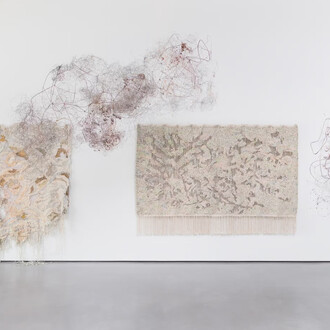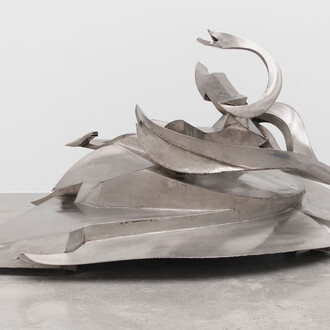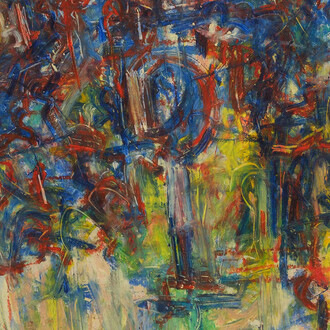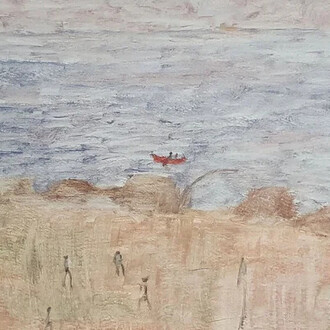This exhibition is presented in three chapters, each showcasing a single video work by a different artist: Cao Fei, Cécile B. Evans, and Guerreiro do Divino Amor. Visitors are encouraged to return to experience the works individually. Each video takes viewers on a journey through alternate realities where the boundaries between the real, the virtual, and the imagined blur. Collectively, the works examine how constructed worlds—whether simulated, cultural, or mythological—shape our understanding of identity, space, and power.
Chapter one: People’s limbo in RMB city by Cao Fei. On view: February 27 through June 29, 2025
In People’s limbo in RMB city (2009), Cao Fei explores a virtual metropolis within the online platform Second Life. The work blends real and fictional elements of Chinese identity and urbanism to comment on capitalism and development in the aftermath of the global financial crisis. Marxist iconography intersects with modern corporate structures, creating a dystopian yet whimsical reflection on 21st-century economic realities.
Chapter two: Reality or not by Cécile B. Evans. On view: July 5 through November 5, 2025
Cécile B. Evans’s Reality or not (2023) adopts the format of reality TV to tell the story of a group of Parisian students who reject their reality and embrace a surreal form of “world-jumping.” As these students break away from conventional reality TV structures, Evans uses the genre’s tropes to critique radicalization, media culture, and the manipulation of identity. The reality TV framework becomes a vehicle for exposing the absurdities and complexities of contemporary life, all while immersing viewers in a visually captivating experience.
Chapter three: The miracle of Helvetia by Guerreiro do Divino Amor. On view: November 8, 2025, through March 1, 2026
In The miracle of Helvetia (2022), Guerreiro do Divino Amor presents the sixth chapter of his ongoing series Superfictional world atlas, using Switzerland as a lens through which to examine national identity as a constructed ideal. Centered around Helvetia—a 19th-century allegorical figure representing the Swiss motherland—this chapter introduces a pantheon of goddesses embodying contemporary myths of beauty, wealth, and perfection. Through rich symbolism and humor, Guerreiro critiques the religious, political, and media forces that uphold Switzerland’s “superfictional” identity as a pinnacle of civilization.
















